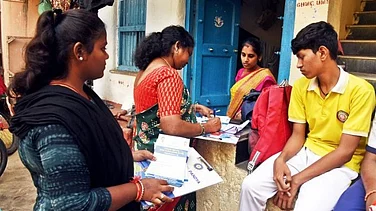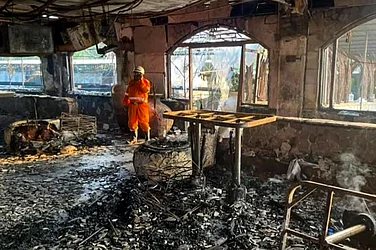Blessed with the highest peaks in the world and close to 10,000 glaciers, the Himalayas are a young and fragile range. Half the surface water we use every year comes from these glaciers, their meltwater feeding three major river systems. Together with monsoon rains, the icecaps ensure the Indus as well as the Ganges and the Brahmaputra flow proud and sustain life along their banks.
The growing energy demand, however, has in the last few decades thrust a new role on these rivers. They are increasingly being harnessed to generate hydropower. At least 16% of electricity generated in the world today comes from such sources. Many mountainous countries have come to depend completely on hydropower. For them, it is also a significant source of revenue.
What makes hydropower so popular is that it is seen as an indigenous, renewable energy resource. Also, the quick startup time of a hydropower plant enables it to respond to peak load demands and provide grid stability. Though initial installation costs are high, operating costs are low. Revenues increase significantly over time, making it an attractive sector for investment. It offers an opportunity for the Himalayan states, many of which are cash-strapped but blessed with huge hydropower potential.

With the government shifting goalpost from state-led development to market-led development in 1991–92, and deciding to fast-track power projects, the scene changed quickly. The private sector jumped in to invest, especially in Arunachal Pradesh and Uttarakhand, the two states with the largest hydropower potential.
While investing in these power projects, did the private sector also invest adequately in the knowledge of sediment dynamics? The question is important because only after knowing about the amount of sediment load a river carries, and at what pace, can one build on it engineering structures that are eco-friendly and economically viable.
Whether it was the Kedarnath disaster in 2013 or the Rishi Ganga flood in 2021, the sediments sequestered in these paraglacial valleys, when obstructed in their path down the river ended up inflicting all that damage on the terrain and the people
Every river coursing down the Himalayas carries not just water, but also large volumes of sediments that float atop or roll along its riverbed. From where do the rivers get this load? It is the frequent landslides along with all the debris left behind by the receding glaciers in the last hundred odd years that contribute to this huge sediment bank. The rate at which these sediments hurtle down a river is what determines the life of the hydropower project constructed on it. When a river flows past an area of high sedimentation, its load can be overwhelming. Studies caution against building a barrage at such spots. It would only aggravate destruction and damage to mankind and environment in times of an extreme climate event.
The Ravi Chopra Committee set up by the Supreme Court in June 2013, post the Kedarnath disaster, when unprecedented floods ravaged Uttarakhand, killing thousands in Kedarnath was tasked to assess a similar lapse. It sought to answer one question: Did the existing and ongoing hydropower projects contribute to the environmental degradation and the tragedy that occurred at Uttarakhand that year?
In the Himalayas lay all the answers. Because of its juvenile nature, the rivers emerging from the glaciers here are still trying to attain equilibrium with the ongoing tectonic upheaval. These mountainous rivers are highly erosive and carry higher concentration of sediment than their peninsular counterparts. This again is tied to glacial movement. The icecaps first descended to around 2500 metres (which is broadly the winter snow line), but are now stationed above 3,500 metres.
The valleys down which they moved got plugged with a lot of unconsolidated sediment which is called moraine. Whether it was the Kedarnath disaster in 2013 or the Rishi Ganga flood in 2021, the sediments sequestered in these paraglacial valleys, when obstructed in their path down the river ended up inflicting all that damage on the terrain and the people. All fingers pointed at the string of barrages, which were operational or under construction that dared come up in this paraglacial zone that existed above 2,500 metres. Even the reservoir water levels fluctuate widely due to operational reasons, affecting the stability of the surrounding slopes. Our study on the impact of slope stability due to the reservoir draw down effect by the tehri dam highlighted this issue. Though less recognised, such collateral damages due to water impounding in the geologically fragile Uttarakhand need to be taken up seriously.
At the same time, there is no denial that hydropower is one of the cleanest forms of the energy and there is plenty of water to carry it on in the Himalayan rivers. We only need to harness it well, keeping in mind that global warming has become a reality and a majority of the Himalayan rivers depends upon the glacial melt for their flow. Only after understanding the relationship between climate change, glacier retreat, slope instability and paraglacial sediment dynamics can we build safe and sustainable hydropower projects that serve our interests. What we need are analogue-based studies that can predict future sediment loads of a river, specifically its bedload that comes from the paraglacial response to climate change. Artificial intelligence (AI) could help devise real-time early-warning systems that track how rivers respond to extreme events so that human tragedies and infrastructure damages can be minimised.
MORE FROM THIS ISSUE
Professor Sarswati Prakash Sati is Head, Department of Basic and Social Sciences, College of Forestry, Tehri Garhwal, and is known for authoritative studies on dams



























